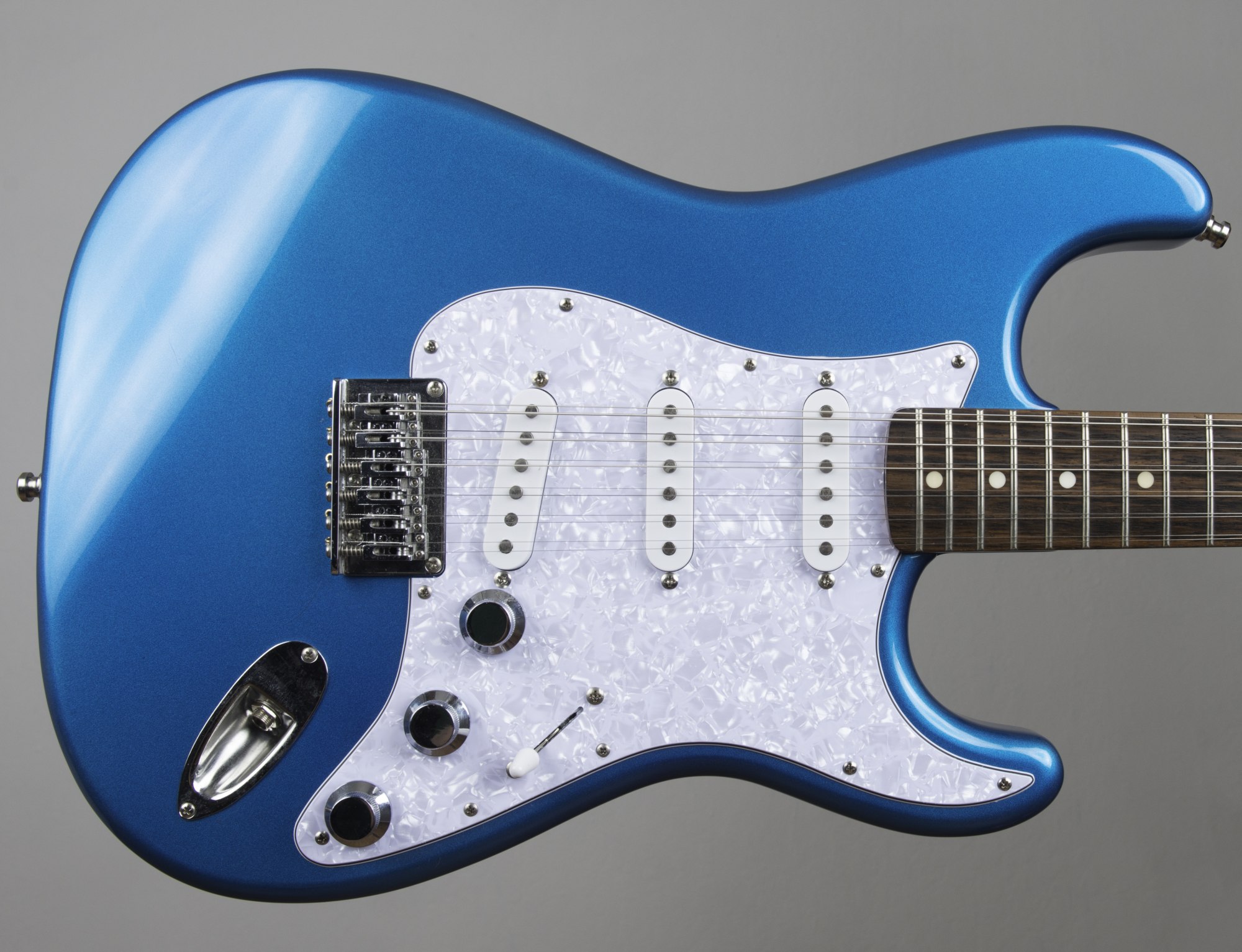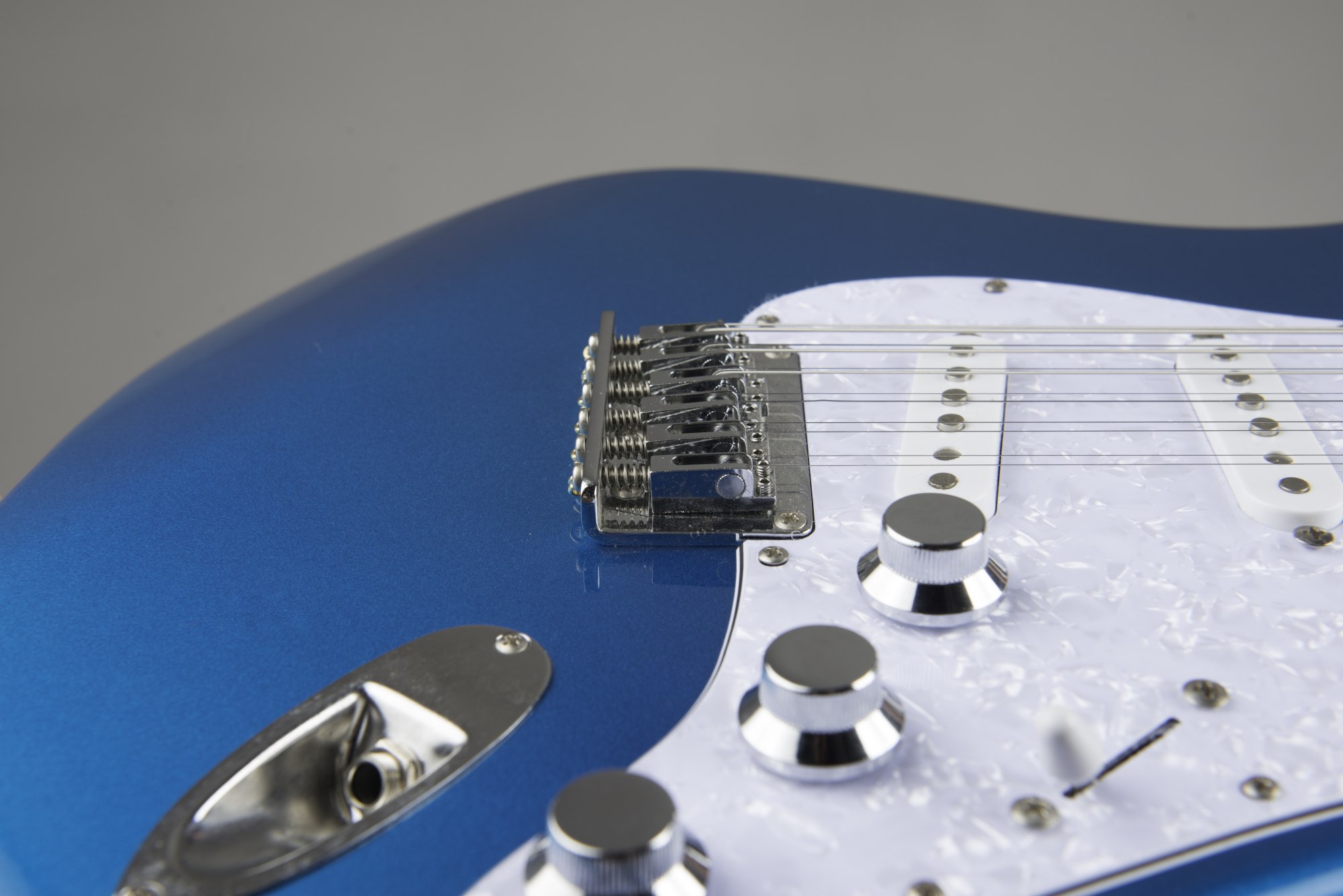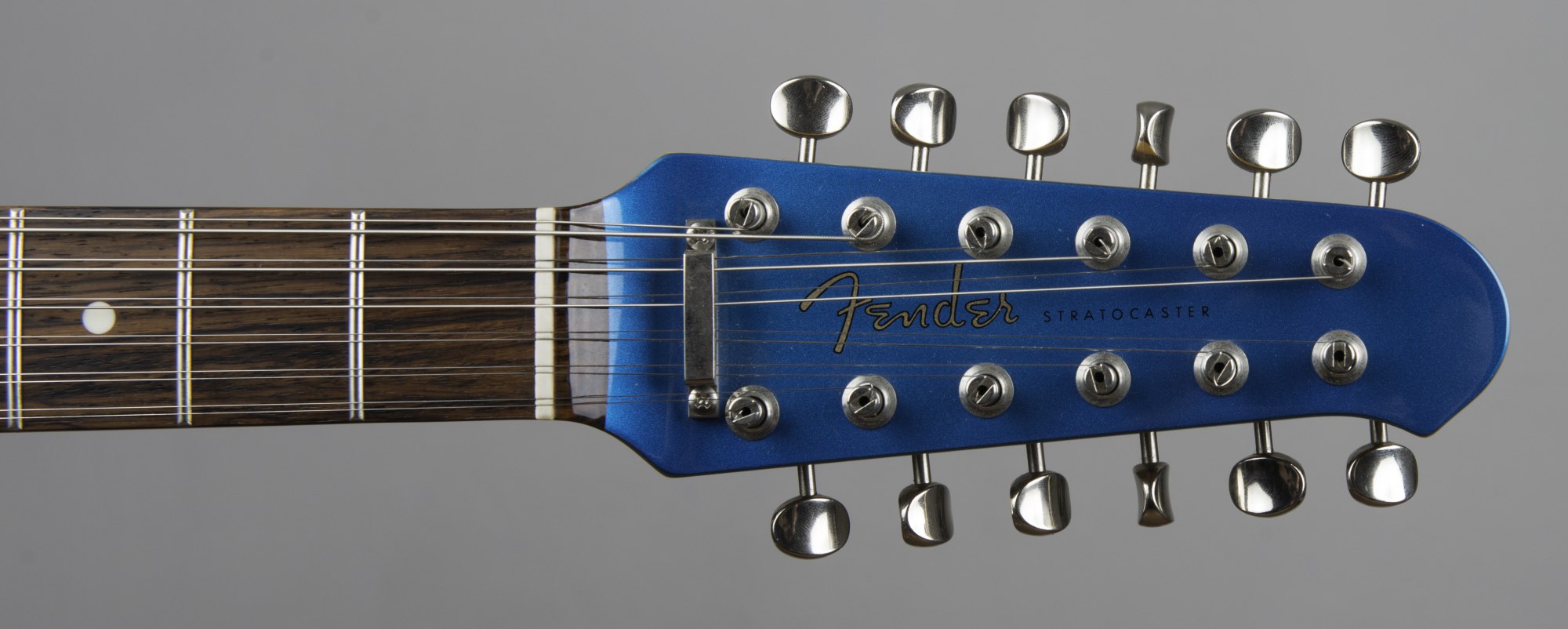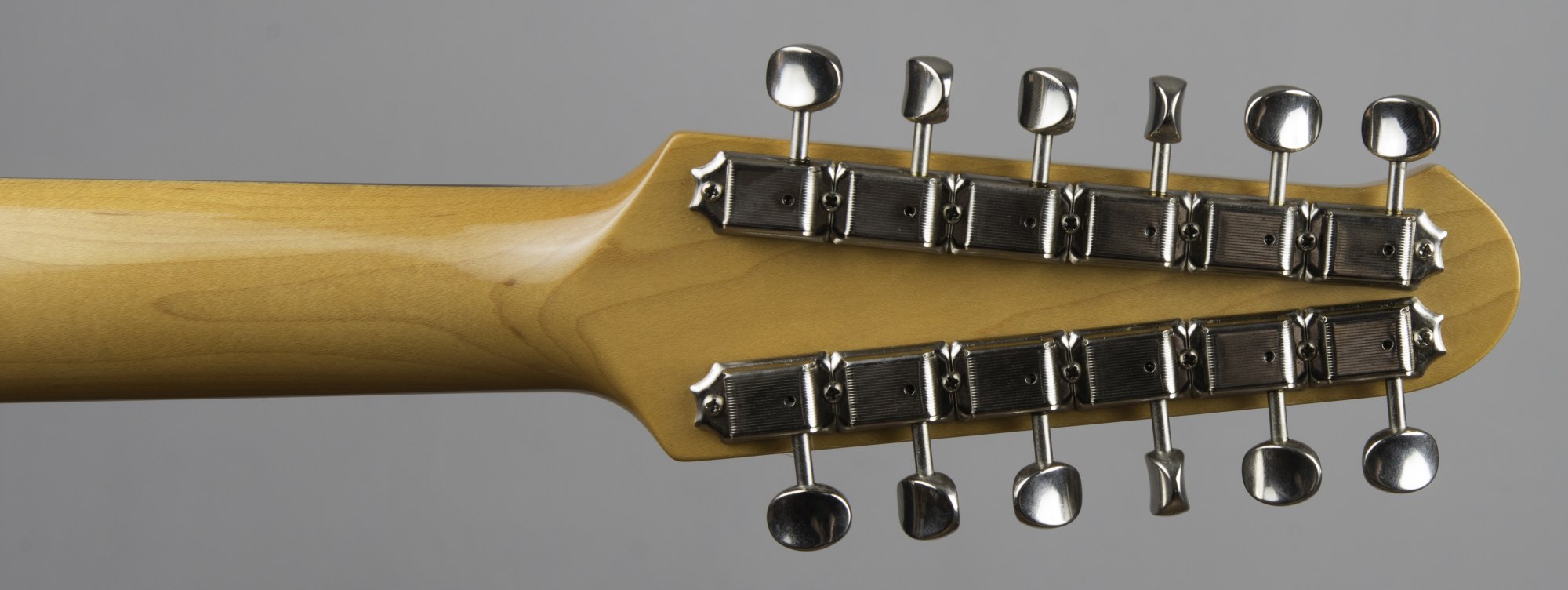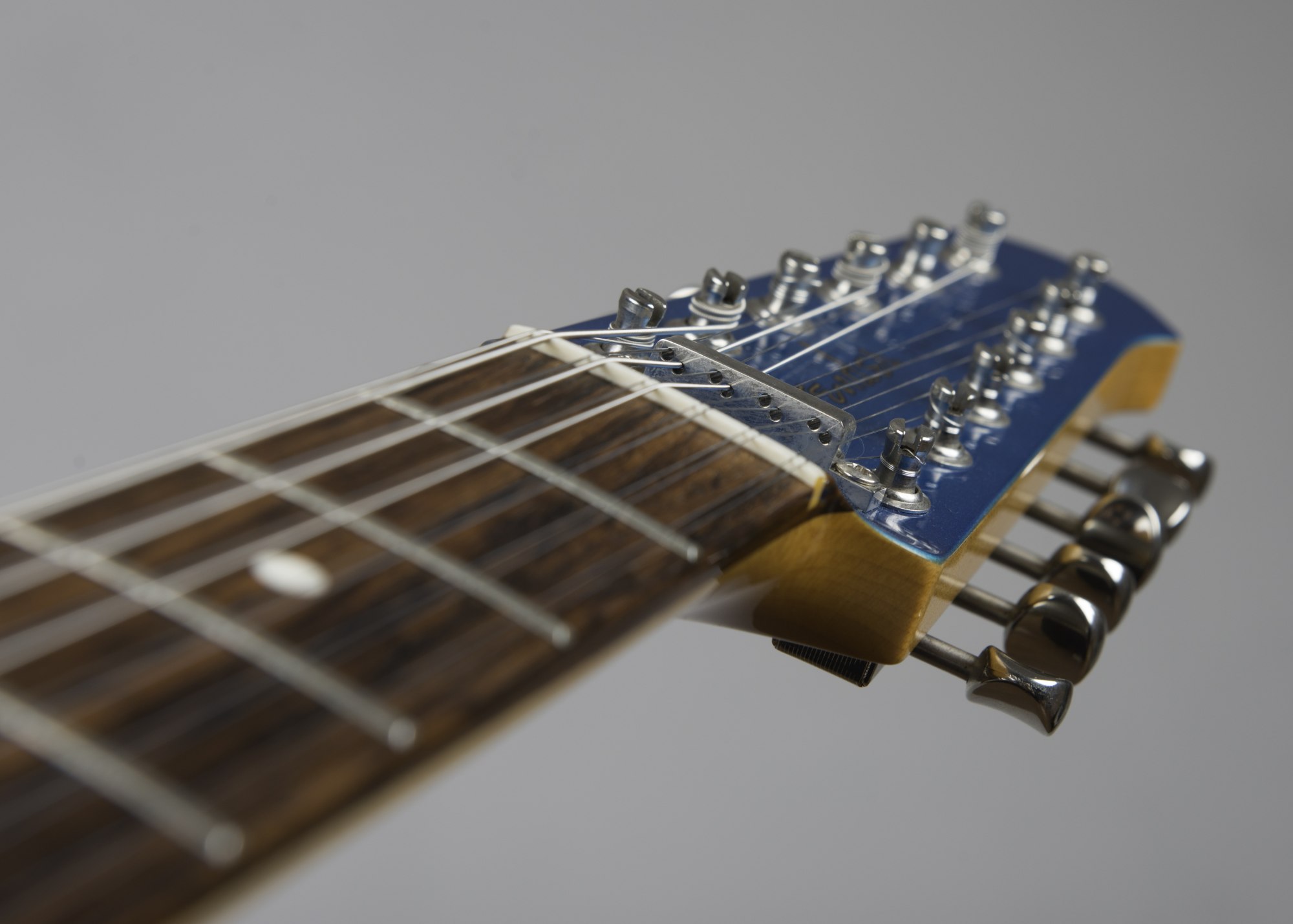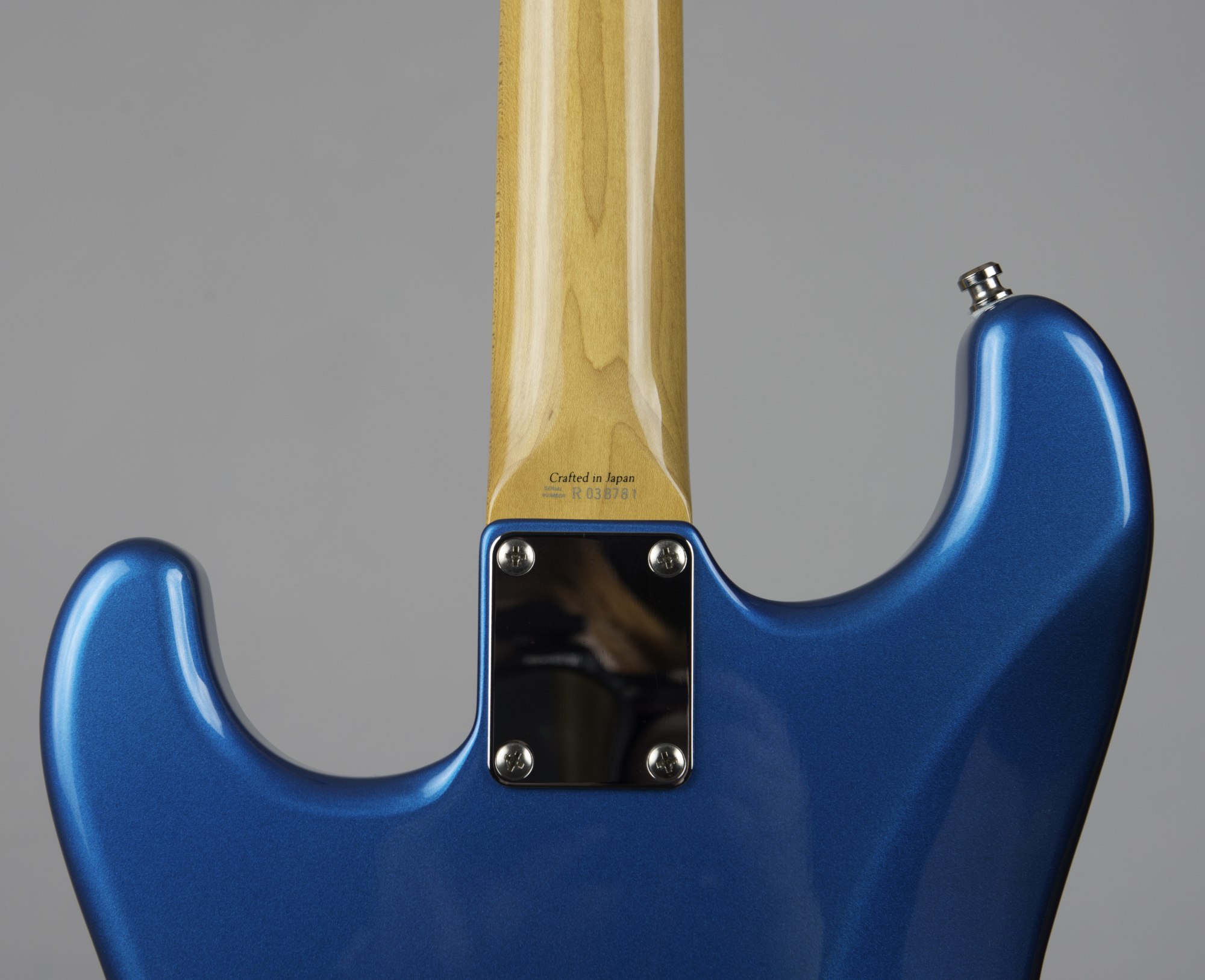Fender Stratocaster XII
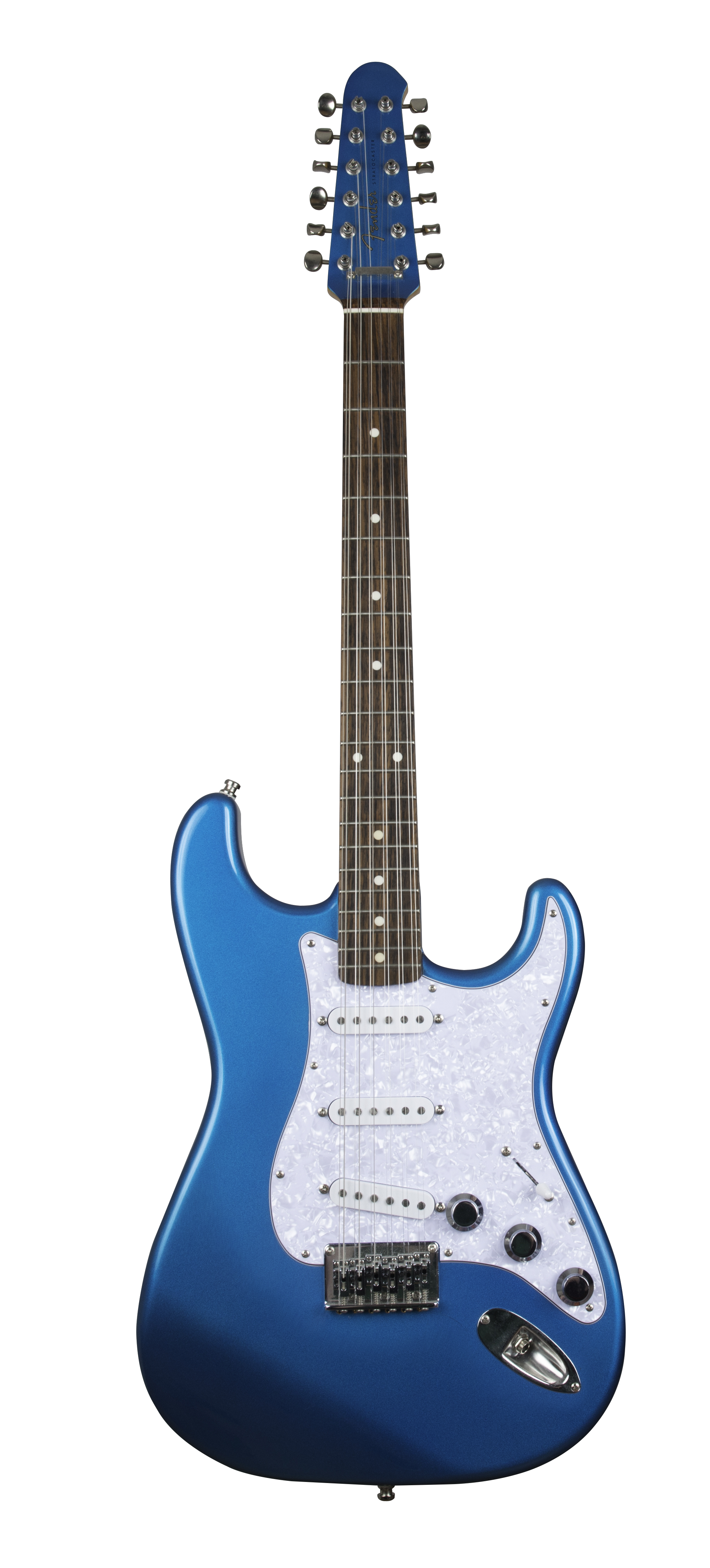 Year: 2005
Year: 2005
Finish: Lake Placid Blue
Origin: “Crafted in Japan”
Mods: Schaller straplocks
Acquired: July 2018
Still owned: Yes
Once upon a time I saw the 12-string twin of my favorite guitar, the red sparkle ESP XJ-6. The XJ-12 (of course) was more expensive than I expected. I later found out it was quite fair — that’s just what Japanese electric 12s go for. I missed it and I have never seen another for sale. I looked into having one custom made; it was either obscenely expensive as a factory custom or a mildly expensive mess to assemble myself. And so, a very specific yearning formed.
I’ve looked at other 12s but there was always something wrong. Too expensive, too cheaply made, uncomfortable neck, wrong finish, or one weird one where the guitar was apparently kept in a shop window and therefore changed color…but only on the front. I never found The Right One. And Kat said, “If you’re going to get a guitar, get the one you really want, because otherwise, you’ll always want the one in your mind more than the one in your hands.”
So I refocused, and I found the answer. I love my Strat, and Fender made a 12-string Stratocaster twice, once in the 90s and once in 2004. I know how it’s built; owners report that it plays like I’d expect. I found one in Lake Placid Blue, “crafted in Japan,” at a Guitar Center in Delaware for less than the XJ-12 that got away, so I wrote and asked for some details. They checked it in the morning and wrote back; I was satisfied and went to buy it in the afternoon…and it was no longer available. I called the store to find someone had called in and put it on layaway in the few hours between my emails (I sorta suspect that when I showed interest, another potential buyer was contacted with a “now or never, dude”). If they changed their mind and got a refund, I’d still have the opportunity to get it, but that was a slim chance.
This stung more than I expected, so I went looking again…and found its twin in a small store in New Hampshire…for even less than the one in GC. It had one noticeable ding on the back but given the price, rarity, and my FOMO rollercoaster, I decided I could live with it pretty quickly. (Keep in mind that building my own would still cost way, way more, and I’m not buying this to put it in a bank vault.) The price of this model has steadily crept up over the last five years; I definitely got the best deal possible.
I was very concerned about the length of the headstock, and the internet was absolutely no help here — there’s nothing I could find that would tell me how much longer the guitar would be compared to a standard Strat? So let me rectify that! It turns out, it’s amazingly compact despite all those tuners: My American Standard’s headstock, from the nut to the upper edge, is about 7.25 inches. The XII’s headstock is roughly a quarter-inch longer than that, coming in at just under 7.5 inches. That means it fits in standard Stratocaster cases, which was a huge surprise to me — I did two weeks of research into baritone guitar cases because I assumed this thing would be enormous like the Electric XII from the late 1960s. When I found out the truth, I scored a great deal on an SKB-66 case so all those Kluson-style slot tuners will be nice and safe.
The finish is on the lighter side of Lake Placid Blue; it’s about the same shade as the blue XJ-6. The parchment-colored plastic was almost immediately swapped out for pearloid and brighter white, but I kept the 5.2k pickups and just snapped new covers on them. I cannot argue with the stock single-coils — it sounds like a choir of happy angels with a little compression (I usually throw some very subtle chorus in too). Interestingly, everything is loaded into a ’62 reissue pickguard, so that made finding a replacement slightly more specific. The neck is just 1.65″ (42mm) at the nut, which makes it very comfortable to play. It is slightly trickier to play than a normal six-string simply because of the courses, but really feels like a normal Strat in most respects. Still, it’s forcing me to be more aware of the angles and pressure of my fingers when playing chords, which is actually a good thing for a sloppy player like myself! Also, the guitar came with 010s and the neck was bowing, so I put on Ernie Ball 12-String Slinkys, where the high Es are both 008, and it fell into its natural playing tension. I think it was probably set up with that lighter gauge from the start, but 010s for electric 12-strings are more common, so that’s what it got. (And nobody else wanted to adjust that truss rod, either.)
